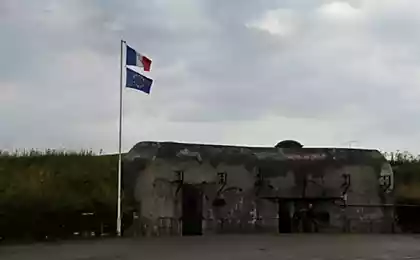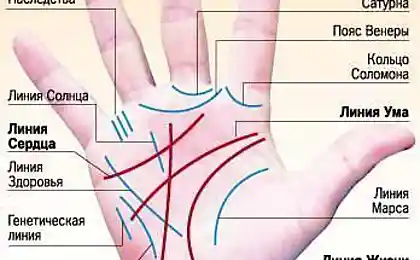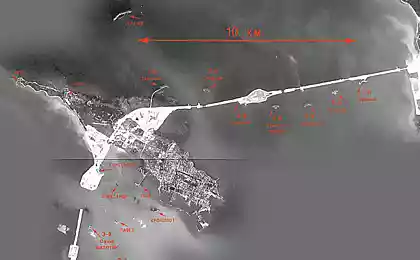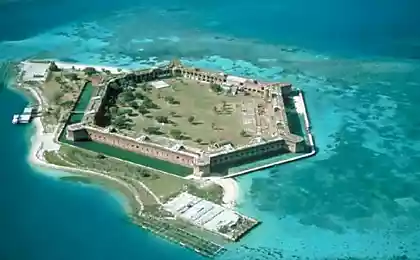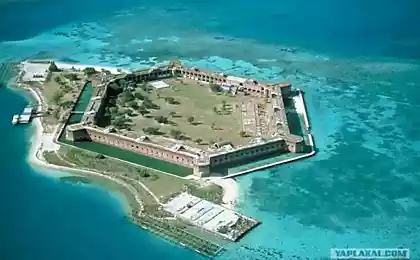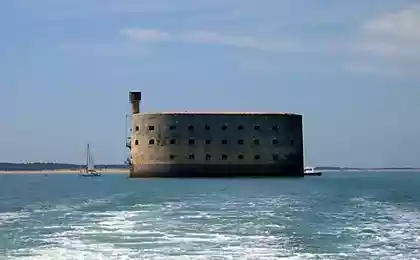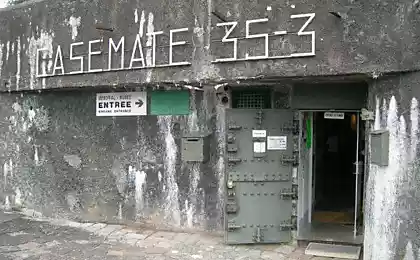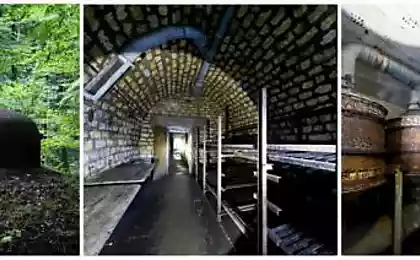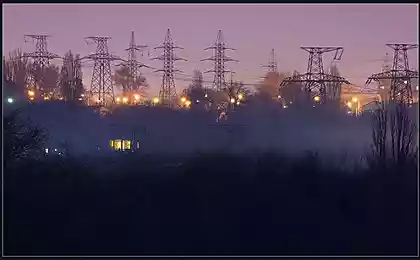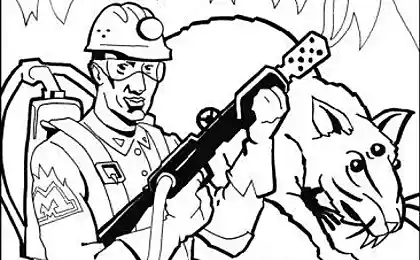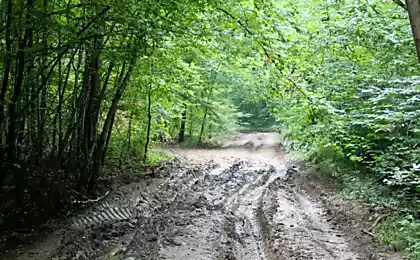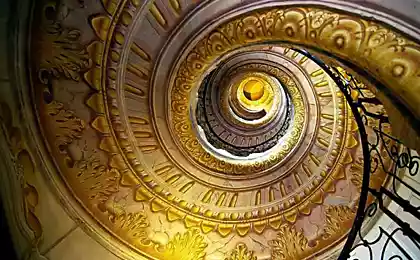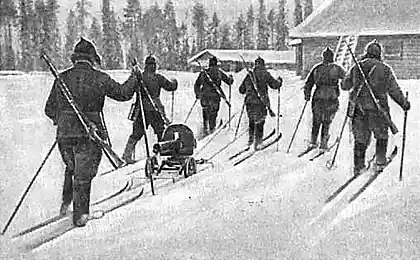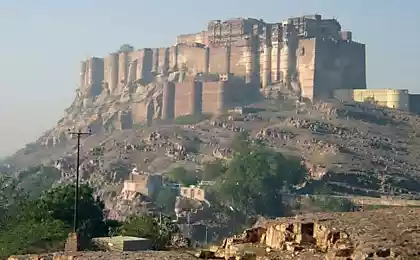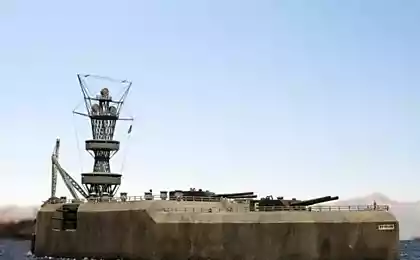1826
Abandoned Fort Maginot Line PO Welschhof
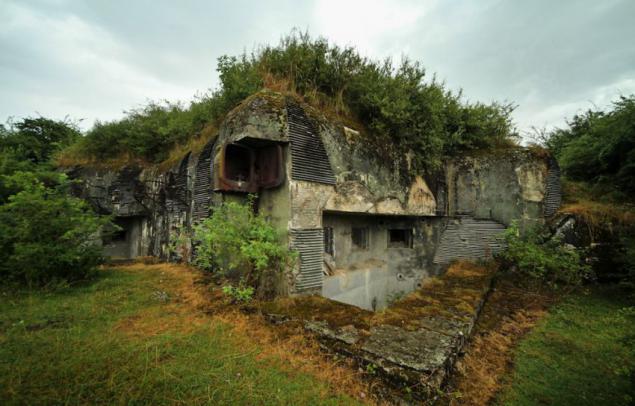
Park the car in the same place as yesterday on the wet grass and the rain go in search of the three warheads of the fort. Brother chose to wait for me in the car.
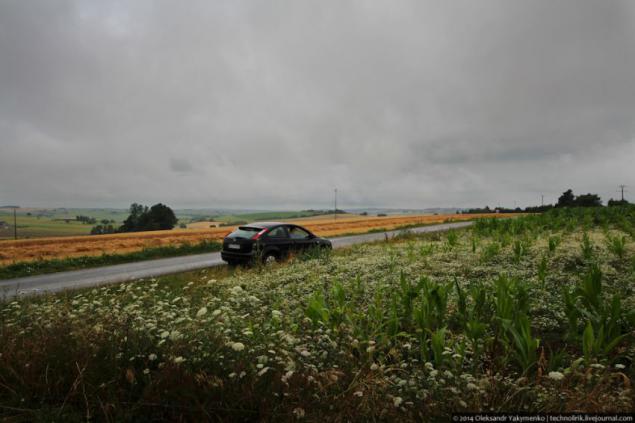
The first block is located immediately next to the road, so it is not necessary to search. One has only to go to the most, that oasis nestled among fields, such as from behind the bushes begin to be viewed bronekupola first combat unit.
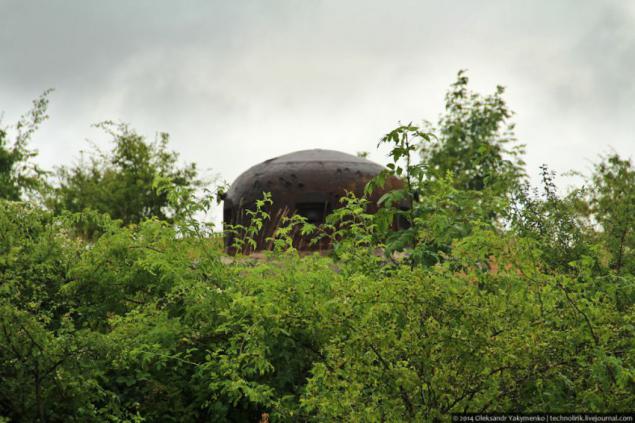
It looks like a combat unit 1. It is the only of the three blocks in which there is an entrance into the fort.
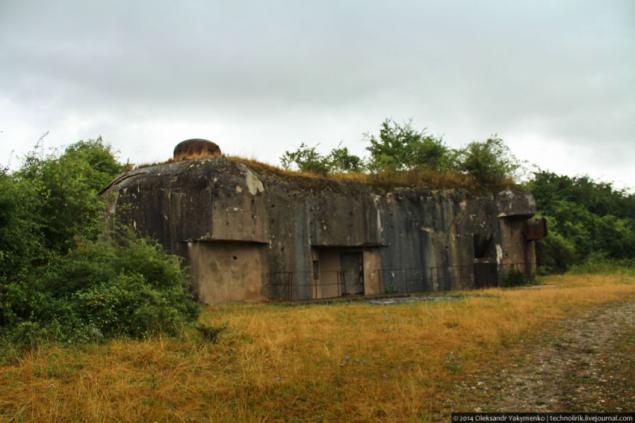
This combat unit has a typical construction of forts and casemates of the Maginot Line. Near the entrance loophole for the machine gun, covering the approaches to the door. On the right is seen broneprozhektor intended to highlight the purpose of fighting during the night. On the roof of the block are three bronekupola.
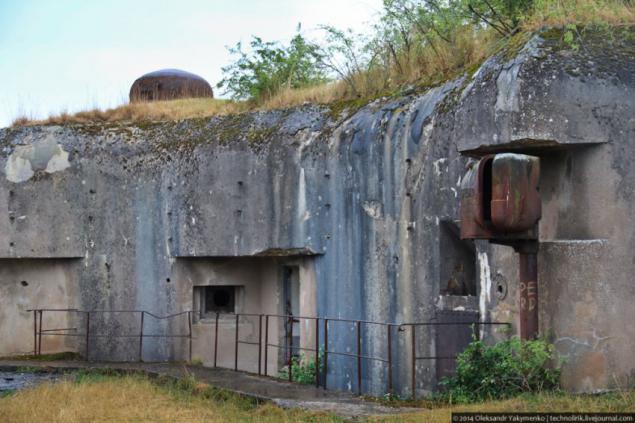
Broneprozhektor closeup.
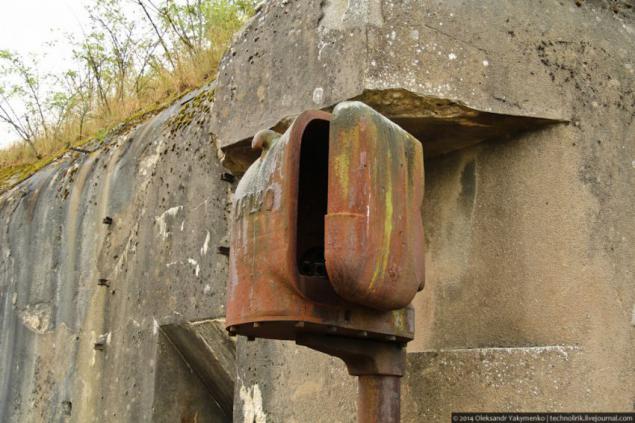
I climb onto the roof of the combat unit to explore more detailed bronekupola outside.
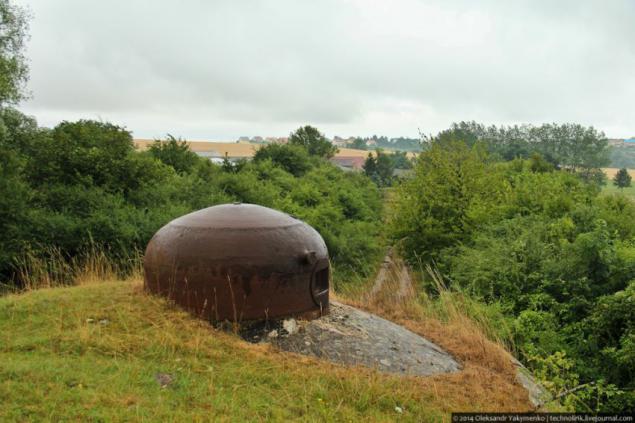
Beauty!
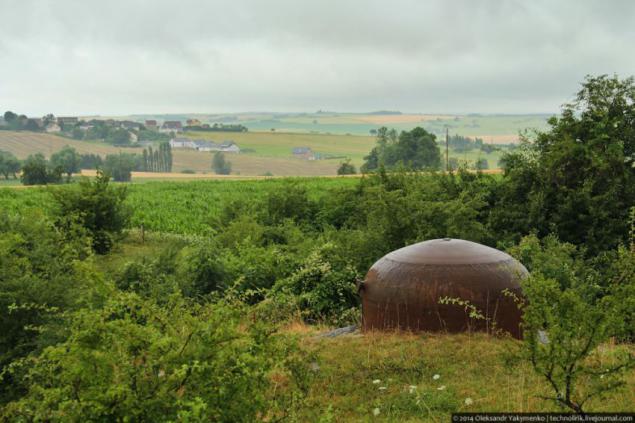
It looks like a typical GFM-dome of the second generation (Type B) outside. Such armored covers were installed on the objects of the Maginot Line, since 1934. They were more reliable and more secure than GFM-dome type A, model 1929.
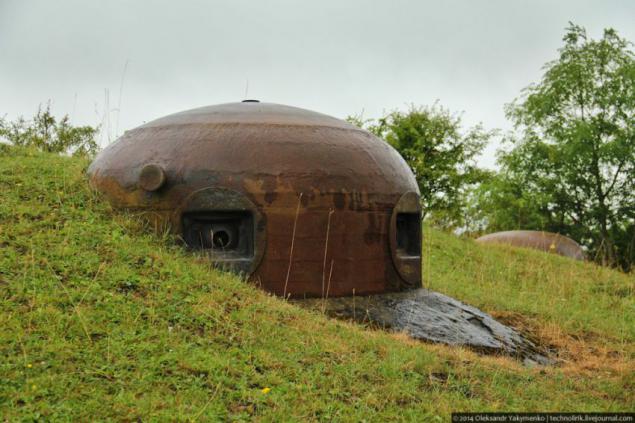
This type bronekupol AM (Cloche d'arme mixte) for the combined instrument. Externally it differs little from GFM-dome of the second generation. Identify it can figure form loopholes.
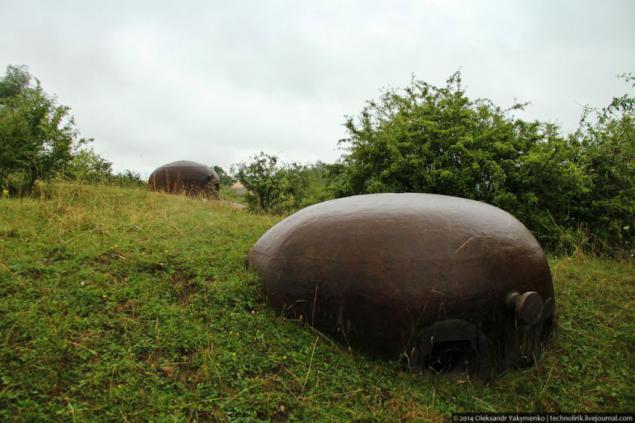
This bronekupole traces of fire in June 1940. Then this unit robust design battered Germans.
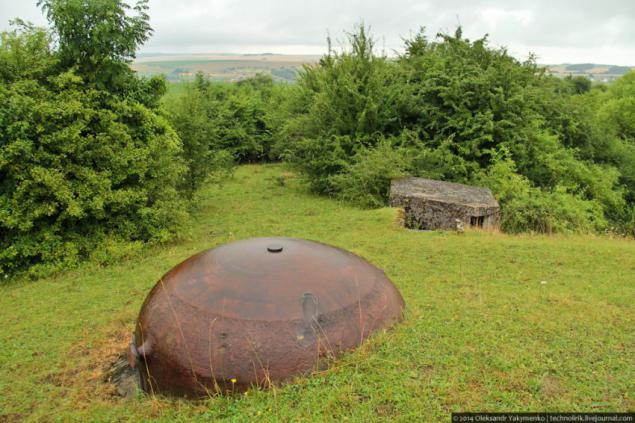
Some extension, it is not typical for the combat units of the forts of the Maginot Line.
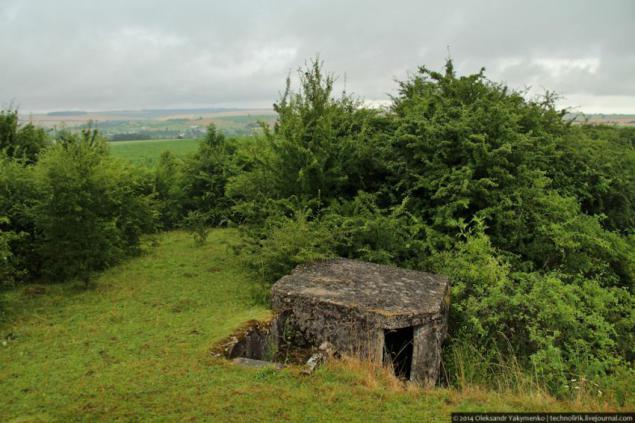
It looks like a combat unit 1 from the outside, while I go in search of the remaining two blocks of the fort.
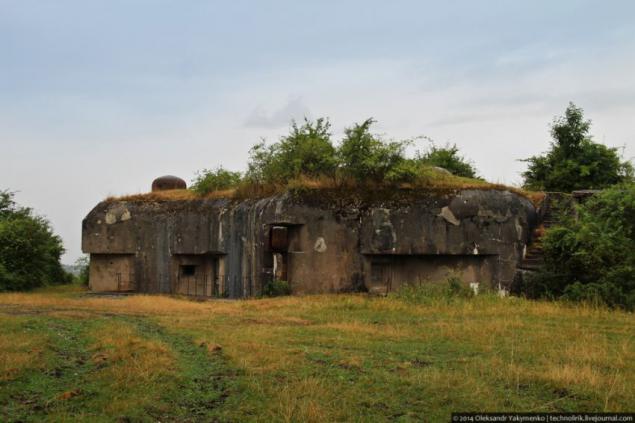
It looks like the fort PO Welschhof satellite. It's a vast green oasis in the middle of fields. I transferred to this plan the fort picture for clarity. On the left is the first unit to which the road leads. The remaining two blocks are lost among the sea of green, and although on the map it seems that finding them is very simple, in reality it was not as easy as it initially seemed.
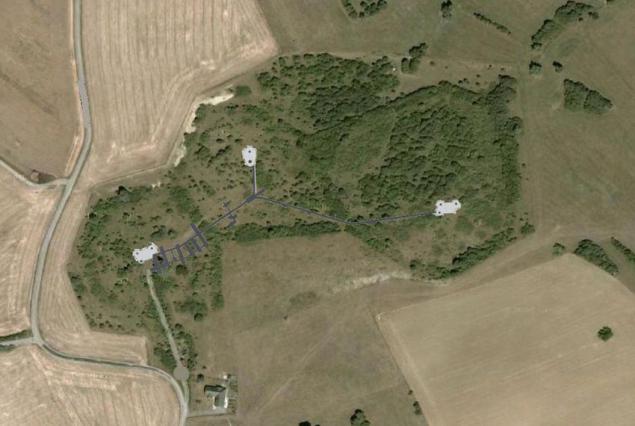
In bypassing I planned about half the time, but at this time I have not invested. The hardest thing was to find the second block. Just looking for him, I spent about half an hour combing the area up and down the fort. While the second unit was looking for and found the third, and the second still can not come. I was thinking to quit the case and return to the car. After half an hour walking through tall grass, bushes and swamp feet wet foot, came the rain and get wet clothes faster.
From time to time along the way met the remnants of anti-fence, barrier once access to the fort from a potential front.
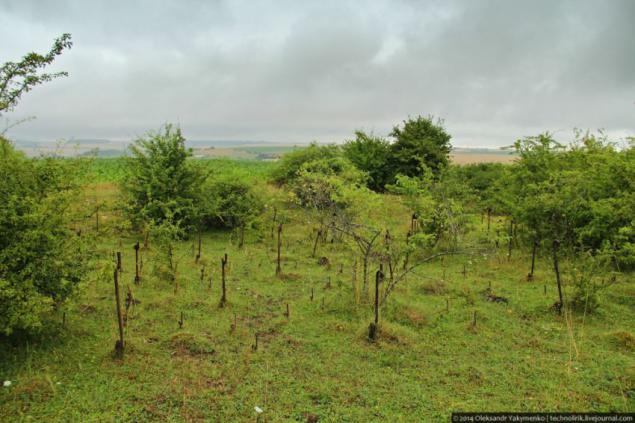
After wandering around in the rain for half an hour in this green oasis, I almost lost faith to find a second block. I decided to make one last search entry and return to the car. Suddenly, in the lumen among thick bushes, I saw two giant brown mushroom. That was the desired goal.
It became clear why this unit was so hard to find. Not only is it completely underground and only two come out of the dome, so still and the field is surrounded by dense thickets of bushes and find it can only be one place at which, and made this picture.
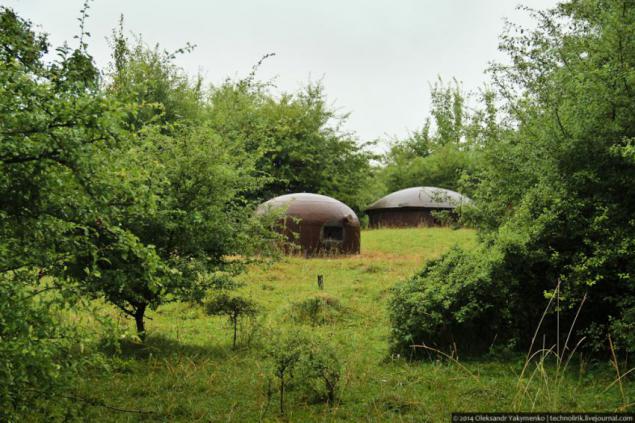
The second combat unit represents a two-storey building, the roof of which is flush with the ground. Escape of a turning tower c machine-gun turret inside and supervisory GFM-armored covers Type B model 1934.
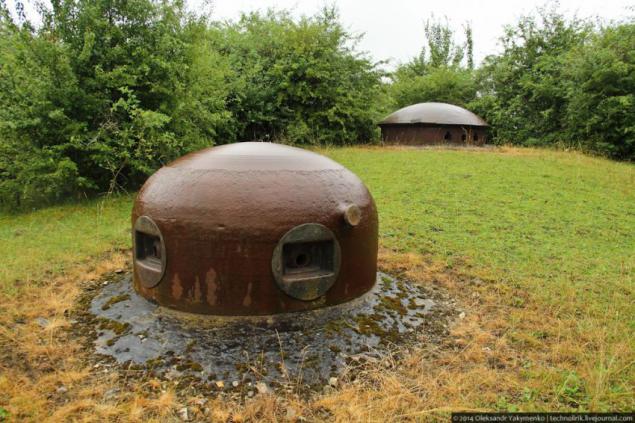
Near GFM-dome is some bronekolpachek, the function of which is unknown to me.
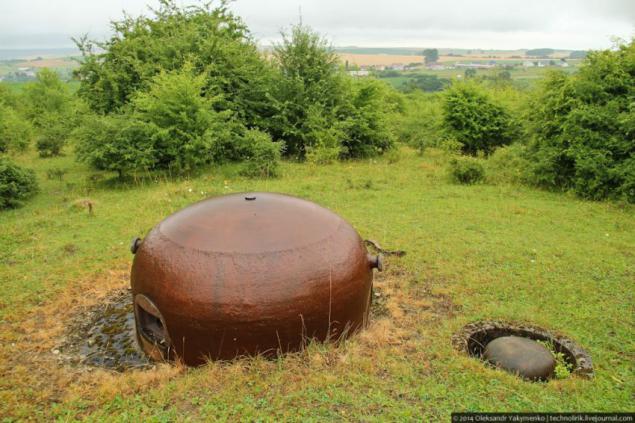
Cupola, which we have raised with the help of still functioning hoist during our walk yesterday underground.
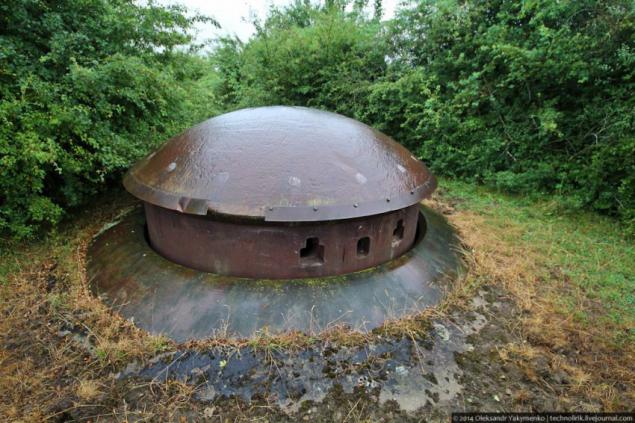
When we raised the tower, and it happened after 12 at night, I vividly draw the following picture: the young couple retired to the grove to listen to the crickets. And then suddenly in this romantic walks out of the ground put forward tower abandoned many years old bunker. Probably, it would be effectively :)

There is nothing more interesting. Last one's left a third unit - go to him.
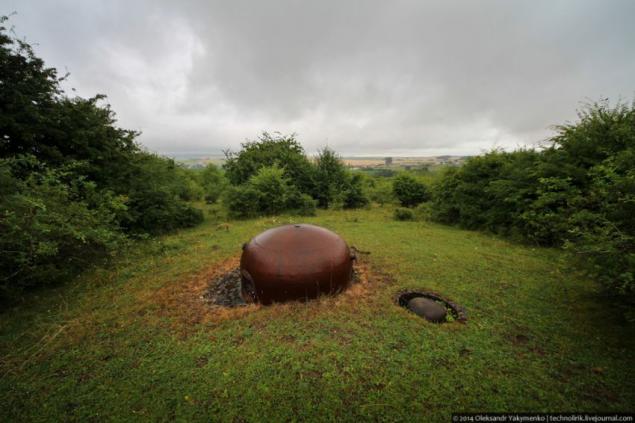
On the way to get on another clearing with "pig tails" as they are called by the Germans. How to think that these barriers have been installed in the second half of the 30s, from the breathtaking possibilities so close to touch history.
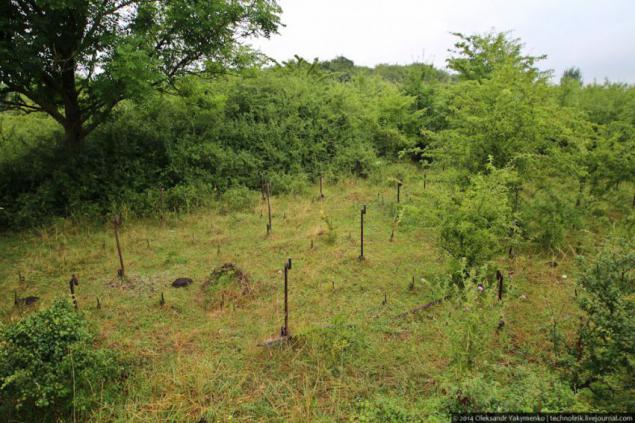
Between the bushes notice the body of the third block.
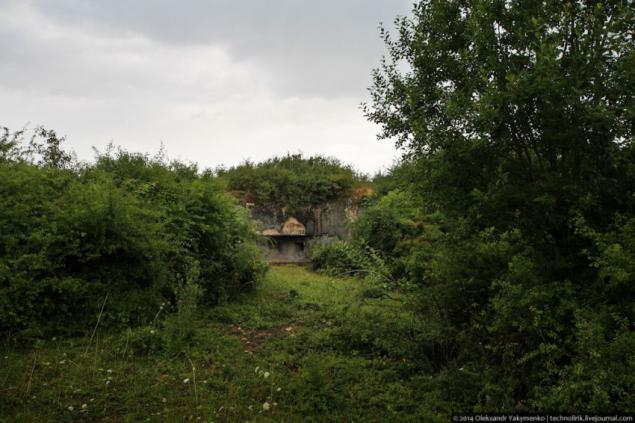
The third block is very overgrown with vegetation, so it looks more than impressive.
In such places, you feel like a pioneer of the ancient ruins of technocratic civilization. Great feeling, for which I go to such places.
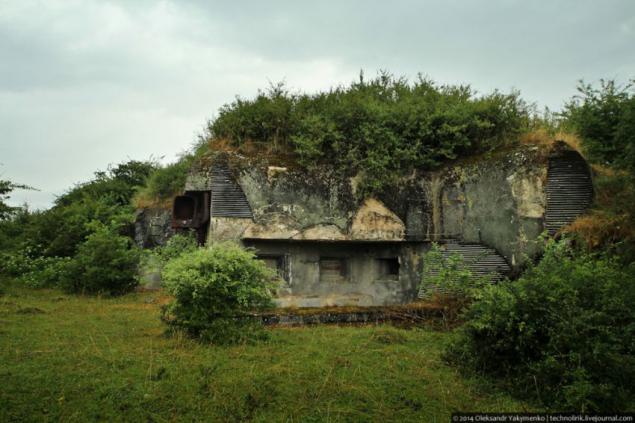
Fort mothballed very carefully. All entrances and openings, through which you can get inside, walled including loopholes for twin gun installations.
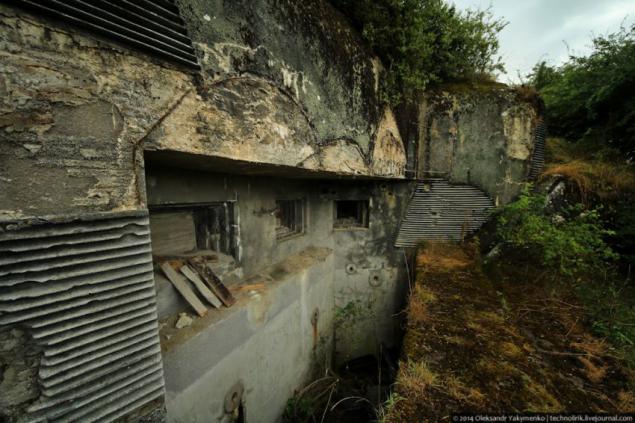
This fort still really is haunted extreme tourists. All the while I was walking around the third block, he could hear voices inside people. What is surprising is that when such a relatively active visiting the fort, inside and outside very clean.
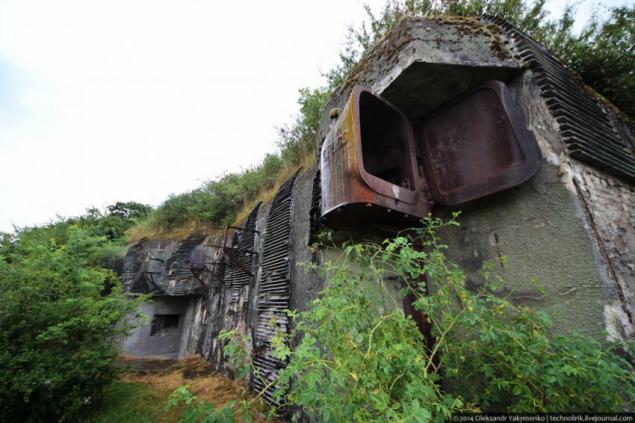
In the second diamantovom ditch can be seen at the bottom of the hole wall - is an emergency exit, that we have seen during our walk yesterday underground.
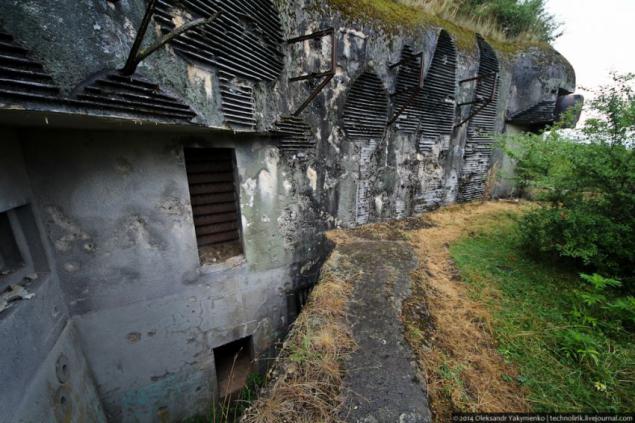
On the whole surface of the combat unit traces of bullets - evidence of fighting the summer of 1940.
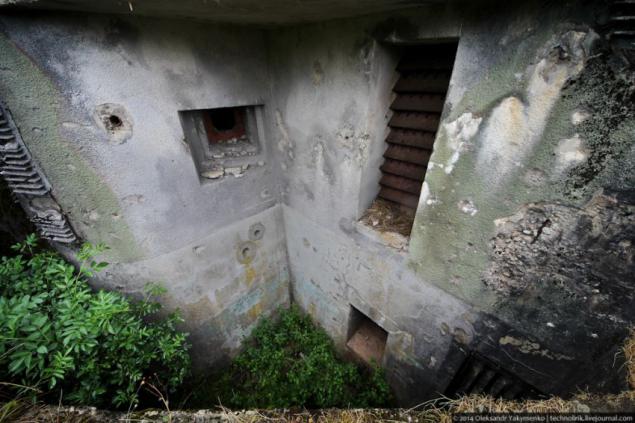
Surprised ribbed structure of the surface of the walls, made in the form of waves. Neither before nor since have I seen such other forts defensive line. Why this is done, there is one version?
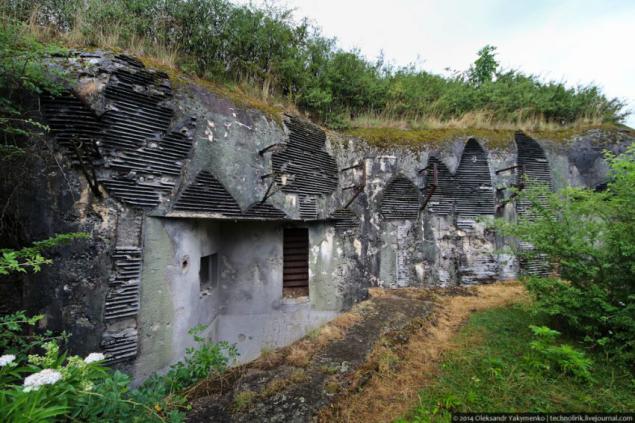
I go upstairs to inspect bronekupola, which here as in the first block of three. The vegetation surrounded the armored covers on all sides, almost completely absorb them.
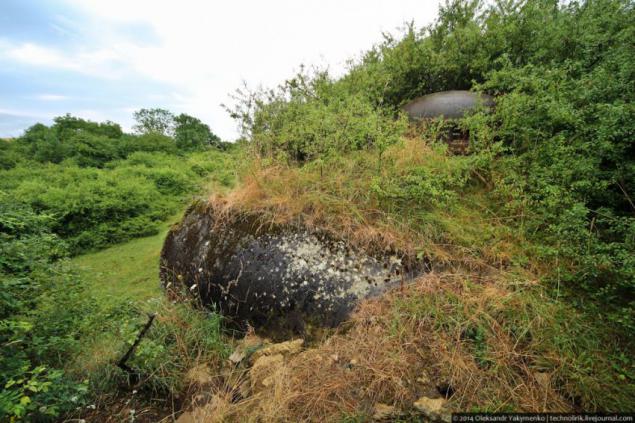
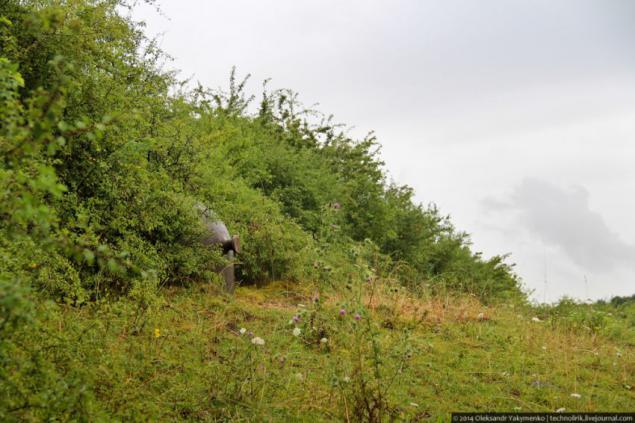
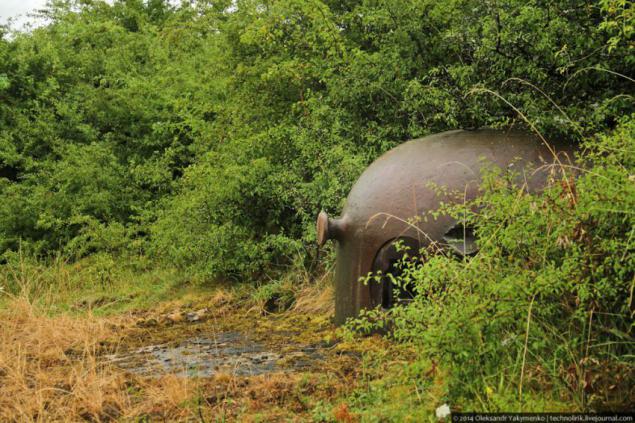
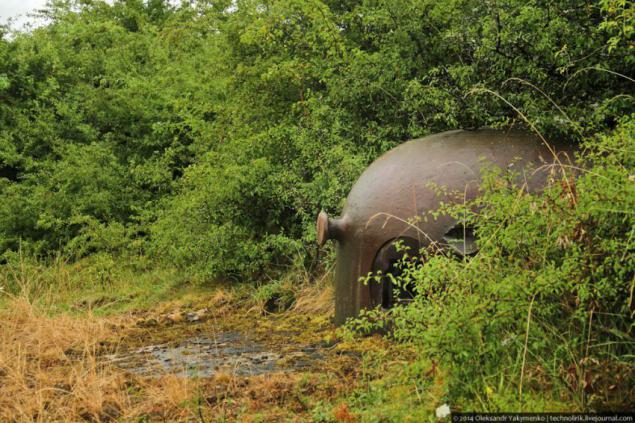
Dome type AM for combined instruments (Cloche d'arme mixte modèle 1934 «B») with traces of shells.
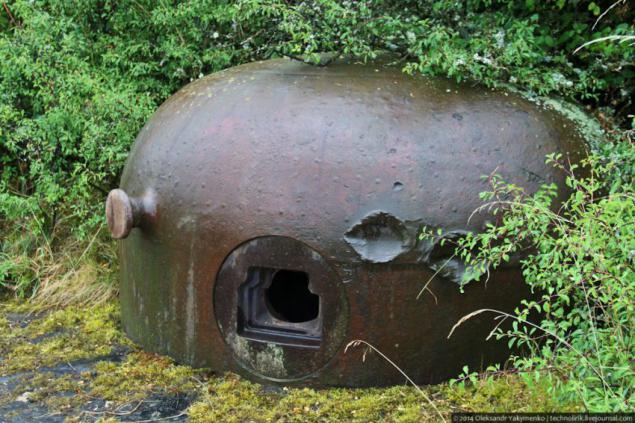
Agricultural landscapes Lorraine from all sides surrounded by a green oasis, grew in 44 years on the territory of the fort, since, as the war went away.
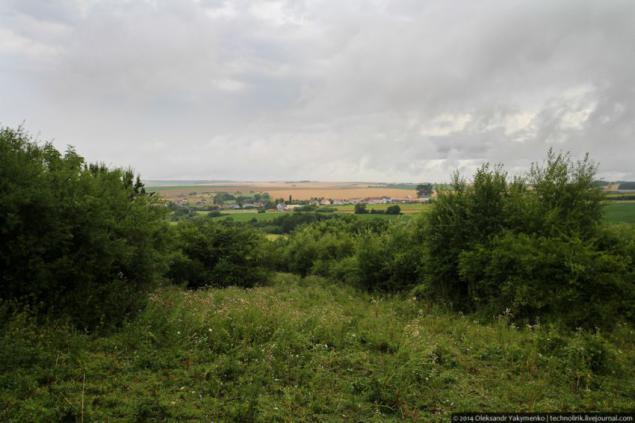
The charm of the aesthetics of the abandoned people of the world.
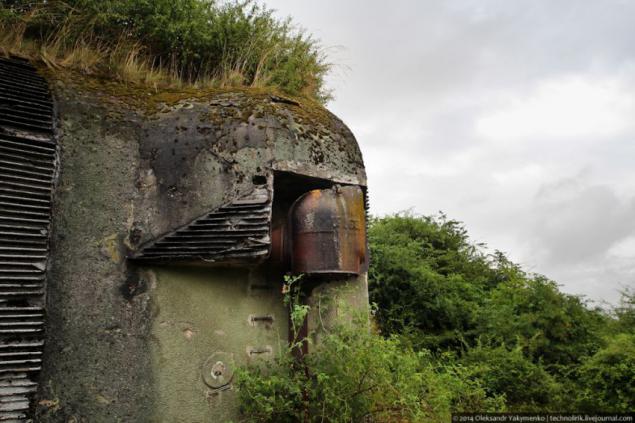
A farewell glance at the third warhead and I go back to the car. I looked at everything I wanted.
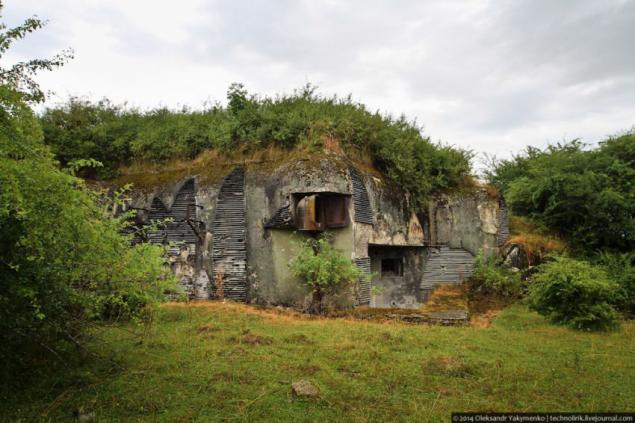
Near the fort are the remains of bunkers, which were built to cover the fort - evidence of bygone wars.
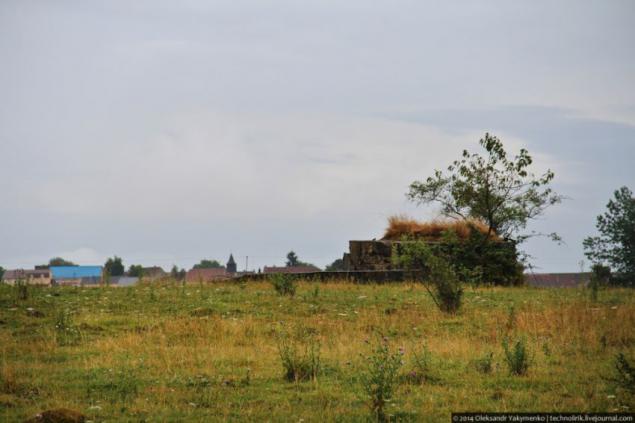
Among the bunkers lazy cows.
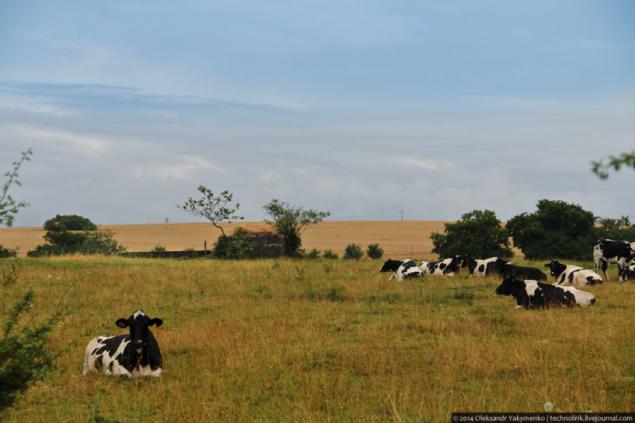
Source: technolirik.livejournal.com
